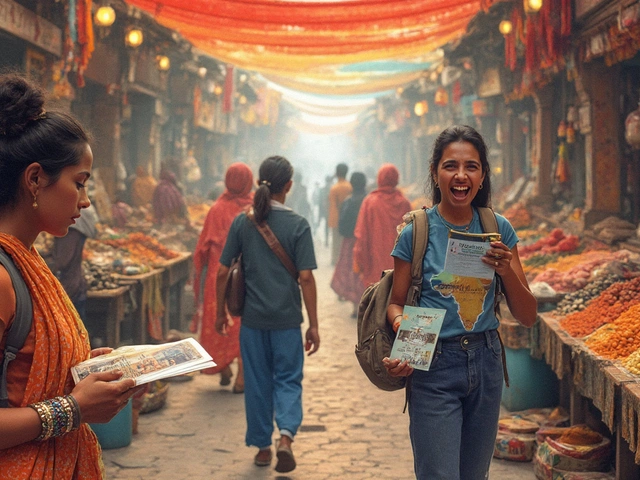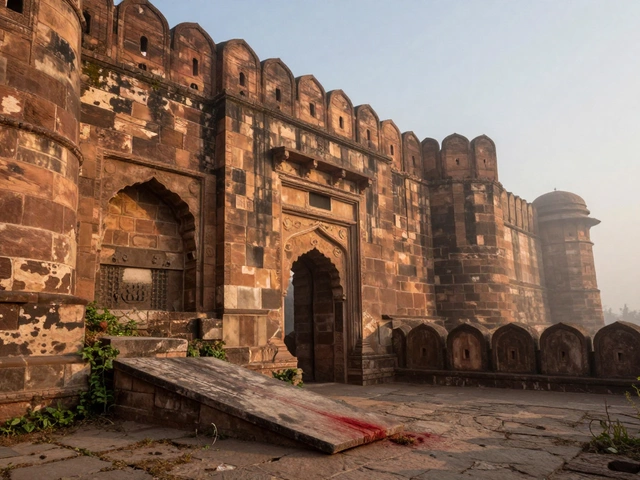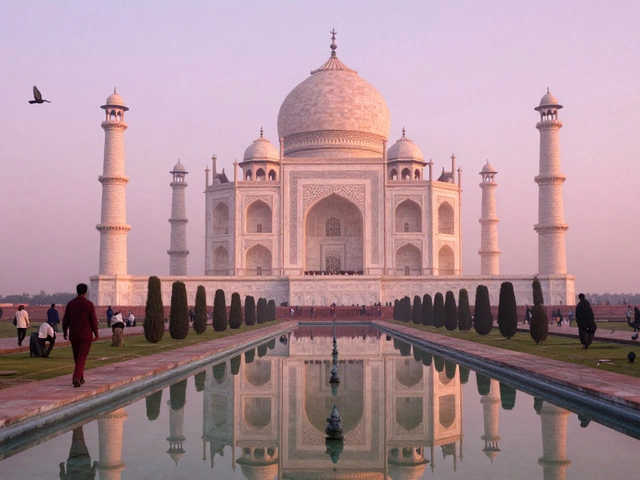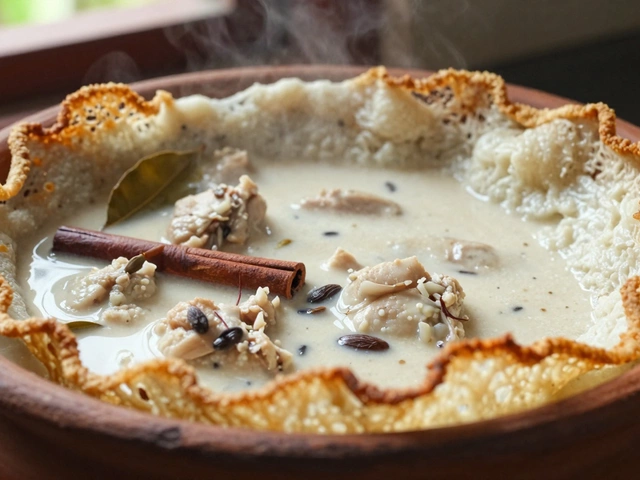Ever noticed how flight prices to India can swing from “not bad” to “are you kidding me?” just depending on the month you book? Turns out, the cheapest month for visiting India is usually May. That might sound surprising, but flights and hotels drop their prices fast as the country heads into the summer off-season. In South India, you’ll find rates for everything—from fancy hotels in Kerala to buses in Tamil Nadu—at their lowest right before the monsoon kicks in.
But hold up, you might be wondering: is it worth it to brave the May heat just to save money? If you’re planning to explore cool hill stations like Ooty or Munnar, the weather can be surprisingly pleasant while the crowds thin out. Even big cities like Bangalore or Kochi offer better deals at restaurants and tours, simply because fewer tourists are around. This is the kind of window savvy travelers love—when your rupee stretches furthest and everything from yoga retreats to private backwater cruises goes on sale.
- Best Time for Cheap Flights
- Weather and Travel Costs by Month
- How Festivals and Holidays Affect Prices
- Hidden Deals Beyond Airfare
- Money-Saving Tips for South India
Best Time for Cheap Flights
If you want to grab wallet-friendly fares to South India, focus on booking in May or early June. This is when flight prices to cities like Chennai, Kochi, and Bangalore are at their absolute lowest. Airlines drop fares because this is just before the noisy summer vacation crowds and right before the monsoon slows tourism down. Plenty of folks avoid India at this time thanks to the heat, which means lower demand and cheaper seats—sometimes up to 30% less than in December or January.
Here's a quick look at how flight prices change throughout the year for a round-trip ticket from London to Kochi:
| Month | Average Flight Price (USD) |
|---|---|
| January | 950 |
| March | 810 |
| May | 600 |
| August | 700 |
| December | 1100 |
Tickets in May usually run about $200–$300 less than during the busy winter holiday season. To get in on these deals, start tracking airfare about three months ahead of time. Set fare alerts with sites like Skyscanner or Google Flights—these track when prices dip and send you a heads up. Flying on weekdays, especially a Tuesday or Wednesday, can also shave off a bit more.
- Book at least 6 to 8 weeks in advance for international flights to India.
- Try mixing and matching airlines—a one-way ticket with one carrier, return with another—sometimes saves you even more.
- Look for flights with longer layovers—they’re usually cheaper and, who knows, you might get a mini adventure on the side.
Bottom line? If you want the cheapest month to travel to India, circle May on your calendar. It’s the sweet spot—cheap seats, empty airports, and plenty of money left in your pocket for food and sightseeing.
Weather and Travel Costs by Month
Planning a trip around weather patterns can help you dodge the biggest crowds and save serious cash. South India sees three main seasons: winter (November-February), summer (March-May), and monsoon (June-September). Travel costs swing a lot depending on which month you choose—both flights and hotels can practically double or halve in price.
Here’s how it usually goes:
| Month | Typical Weather | Average Flight Cost (from US, round-trip) | Hotel Price (per night, 3-star) |
|---|---|---|---|
| January | Cool, dry, peak season | $900-$1200 | $35-$60 |
| April | Hot, less crowded | $750-$950 | $28-$45 |
| May | Very hot, pre-monsoon | $650-$850 | $22-$35 |
| July | Heavy showers, off-peak | $720-$950 | $25-$40 |
| September | End of monsoon | $750-$1050 | $28-$48 |
| December | Pleasant, peak season | $950-$1350 | $40-$70 |
May is often the cheapest month for airfares and hotels, especially for popular South Indian spots like Kochi, Mysore, and Pondicherry. But don’t just chase the cheapest deals—summer heat can hit 40°C (104°F) in cities like Chennai! The good news is, many areas in the Western Ghats (think Munnar or Kodaikanal) stay much cooler.
Here’s what you can expect when booking:
- Winter (Nov-Feb): Highest rates and packed tourist hot spots. Great weather, but not so great for wallets.
- Summer (Mar-May): Prices start dropping quickly. Heat ramps up, but you’ll beat the crowds and stretch your budget.
- Monsoon (Jun-Sep): Even fewer tourists and bargains on hotels. Some outdoor plans can get rained out, but green landscapes are awesome if you’re flexible.
If you’re picking dates to maximize savings, aim for May or late June. Keep in mind, though, if you’re after things like beach time in Goa or wildlife safaris, check if local rain or heat will actually suit you. It’s all about what you want from your trip.
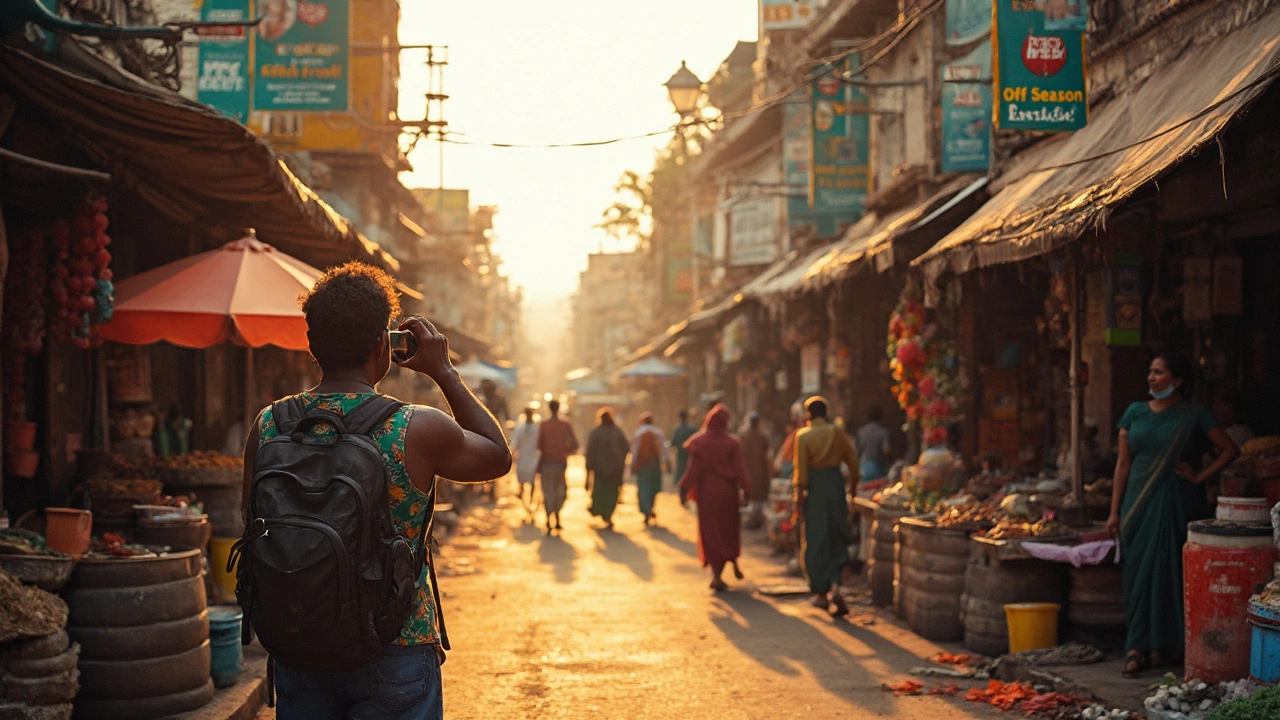
How Festivals and Holidays Affect Prices
Planning your trip around Indian festivals is like playing chess with your budget. Prices—especially for flights and hotels—shoot up fast during big events and popular holidays. Take Diwali, for example. Even though it’s celebrated more in North India, flight demand from abroad and domestic travelers spikes all across the country, including the south. The same goes for Pongal in Tamil Nadu and Onam in Kerala—these festivals aren’t just huge locally, they draw families back home and attract loads of tourists, pushing up all kinds of costs.
Here’s something that catches a lot of people off guard: festivals don’t all show up on the same date every year. Indian holidays follow different calendars (solar, lunar, regional), so each year, airline and hotel rates can go wild depending on when these festivals land. If you're trying to book a bargain trip, research the festival dates first—and keep an eye on any long weekends, since prices can jump even if it’s not a festival week.
To give you a sense of the price shifts, check out this quick table comparing average hotel rate hikes around major South India travel festivals:
| Festival | Typical Month(s) | Hotel Price Increase (%) |
|---|---|---|
| Onam (Kerala) | August/September | +35% |
| Pongal (Tamil Nadu) | January | +25% |
| Diwali (Pan-India) | October/November | +30% |
| Christmas/New Year | December/January | +40%-60% |
If your goal is budget travel, steer clear of these weeks unless you’re dying to experience the festival vibe. The weeks just after or before big festivals usually bring prices back down to earth.
- Check festival calendars for your planned destination well before booking.
- Always compare hotel rates for the same area a few weeks before and after any major event.
- If you land during a festival by accident, look at nearby towns or smaller cities—rates tend to be lower off the main festival circuit.
South India is packed with local festivals and holiday events, so a little planning goes a long way. Use those quiet stretches between festivals to lock in the best prices—sometimes you’ll save up to half on both flights and rooms.
Hidden Deals Beyond Airfare
It’s easy to focus just on flight prices, but if you really want to cut your costs for a cheapest month trip to India, there’s a whole world of hidden deals waiting right after you land. May is when hotels in South India scramble for bookings, slashing rates by 30-50%. Expect to find extra perks, too—like free breakfast, late checkout, or even an upgrade, especially if you book directly with the property or show up in person.
Transportation is cheaper as well. Private drivers and tour companies lower their prices because demand drops. For example, you can rent a car with a driver for road trips between Bangalore and Mysore at nearly half the rate you’d pay during peak winter months. Trains and buses rarely sell out, and you can even get last-minute sleeper tickets or seats in premium classes.
Even big-name attractions take it easy on your wallet during the low season. Entry fees don’t usually change, but you’ll spot bundle deals or guided tours at discounted rates. Ayurvedic retreats and yoga centers toss in extras—think longer massages or daily classes—just to lure in guests. In places like Kerala’s backwaters, ask local boat operators for off-peak “monsoon packages”; they’ll be more willing to negotiate, especially if you’re traveling with friends or family.
- Always check official websites for off-season discounts on museums, wildlife parks, and popular sights.
- Local markets and shops offer lower prices and are more open to bargaining after tourist season peaks.
- Group activities (like cooking classes or heritage walks) are cheaper and usually more personal, since you’re not fighting for a spot.
One last thing—don’t forget about mobile apps and loyalty programs. Indian hotel chains (think Taj, ITC, OYO, and Treebo) often run app-only specials right around the off season. It takes just a few extra taps, but the savings can cover your chai for the week.

Money-Saving Tips for South India
If you’re serious about getting the most out of your budget while traveling in South India, you need a few practical tricks. Street food is your friend—meals can cost as little as ₹50 (about 60 cents) at local joints in Chennai or Kochi, and the flavors are incredible. Skip the international chains and you’ll save a ton. When it comes to getting around, ditch private taxis and use local transport. Buses and suburban trains connect most cities for a fraction of what ride-hailing apps charge. For example, an AC bus ride between Bangalore and Mysore is usually less than ₹350, compared to ₹2,000+ for a cab.
Don’t ignore budget hotels and hostels, which have leveled up big time. Look for OYO rooms and Zostel hostels—they offer clean beds and free Wi-Fi, often under ₹900 per night. Booking directly on their websites, instead of third-party travel apps, can sometimes score you exclusive discounts or free upgrades. If you love planning, check for flash sales on Indian airline sites like IndiGo, AirAsia India, or Akasa Air. Booking two to three months in advance is your sweet spot for the absolute lowest rates, especially if you’re flying during the cheapest month.
- Bring a reusable water bottle with a filter—bottled water can add up quickly over weeks.
- Travel overnight by train to save on both transport and accommodation. Second and third-class AC compartments are safe and affordable.
- Use UPI apps (like Google Pay or PhonePe) for small purchases; digital payments are everywhere and you often get local deals.
- Shopping for souvenirs? Head to government-run emporiums for fair prices, so you don’t pay the "foreigner" premium at tourist markets.
If you’re trying to get a picture of real costs, here’s a quick breakdown for a typical low-budget day in South India (all amounts in INR):
| Expense | Average Daily Cost |
|---|---|
| Hostel Bed | ₹700 |
| Meals (Street Food) | ₹250 |
| Local Transport | ₹150 |
| Attractions (Entry Fees) | ₹200 |
| Extras (SIM, Snacks, Small Shopping) | ₹150 |
| Total | ₹1,450 (~$18) |
Even if you splurge a bit here and there, you’re still well under what you’d spend in most Western or Southeast Asian destinations. With a little know-how, South India can be one of the easiest places to stretch your money without missing out.

